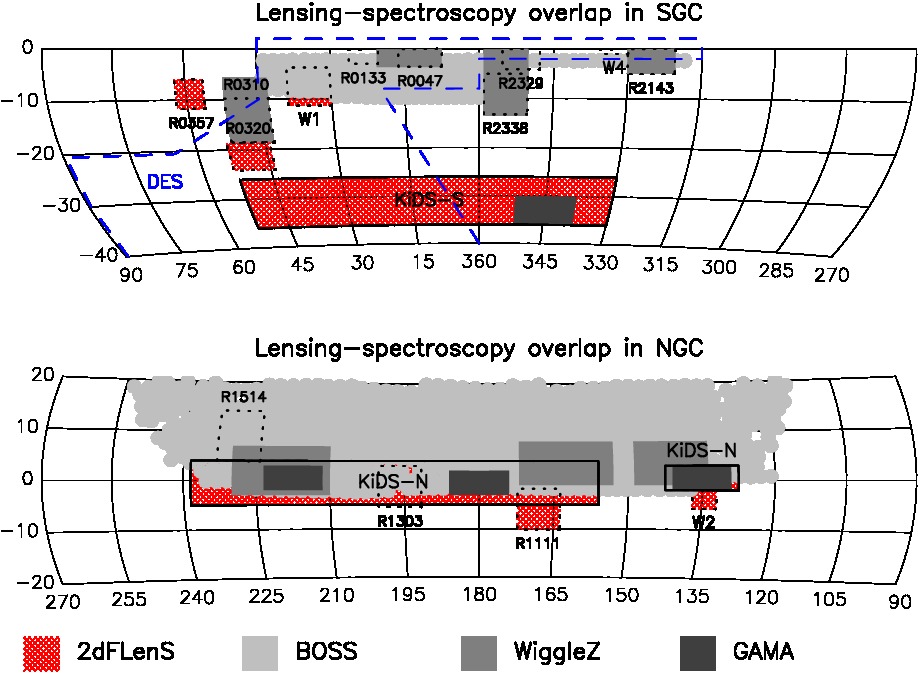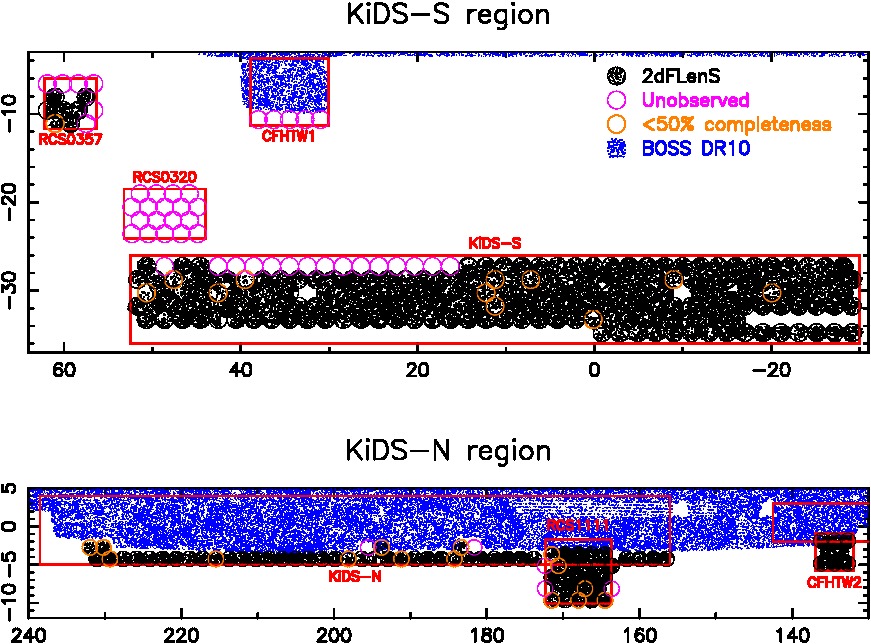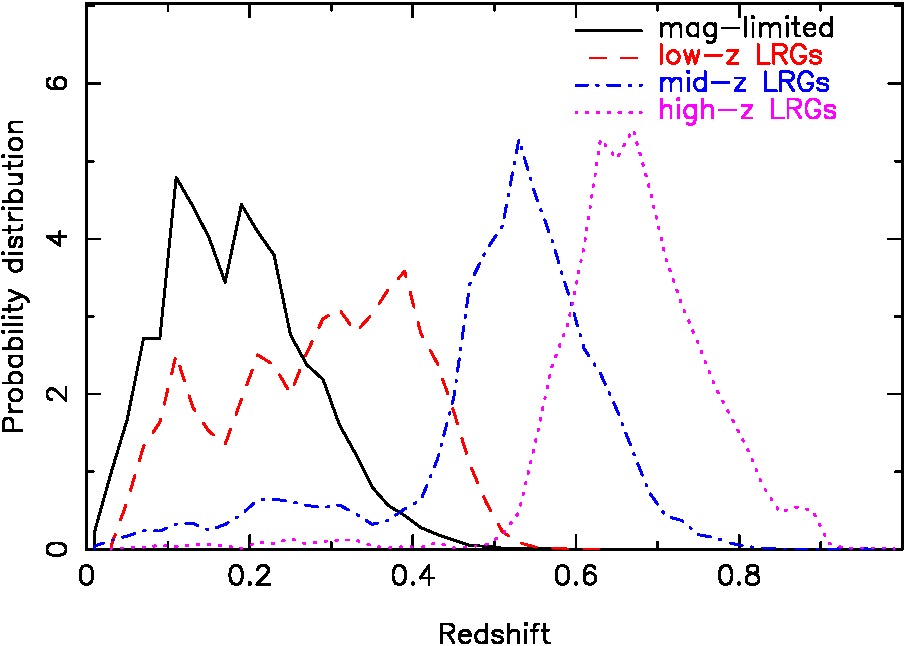Sky coverage
 2dFLenS targeted a series of regions in the Southern
Galactic Cap (SGC) and Northern Galactic Cap (NGC), shown as the
red-shaded areas in the figure on the left. The principal focus of the
observations was the area imaged by the Kilo-Degree Survey which
lacked existing coverage by the Baryon Oscillation
Spectroscopic Survey. 2dFLenS also conducted observations in
southern sky regions of two other lensing surveys, CFHTLenS and RCSLenS, which lacked previous deep
spectroscopic follow-up. Our observations also overlap with the
footprint of the Dark Energy
Survey.
2dFLenS targeted a series of regions in the Southern
Galactic Cap (SGC) and Northern Galactic Cap (NGC), shown as the
red-shaded areas in the figure on the left. The principal focus of the
observations was the area imaged by the Kilo-Degree Survey which
lacked existing coverage by the Baryon Oscillation
Spectroscopic Survey. 2dFLenS also conducted observations in
southern sky regions of two other lensing surveys, CFHTLenS and RCSLenS, which lacked previous deep
spectroscopic follow-up. Our observations also overlap with the
footprint of the Dark Energy
Survey.
We tiled the 2dFLenS observation regions with 2-degree diameter circular pointings of the 2dF+AAOmega spectroscopic system. The 2dFLenS project was allocated a total of 53 AAT nights spread across the 14B, 15A and 15B semesters. Observations for the project were carried out between 17 September 2014 and 5 January 2016.
 At the end of the survey we had succeeded in observing 275
2dF field centres, including almost all the fields overlapping with
KiDS. The figure on the left illustrates the final status of the survey
coverage, which amounted to a total of 731 square degrees.
At the end of the survey we had succeeded in observing 275
2dF field centres, including almost all the fields overlapping with
KiDS. The figure on the left illustrates the final status of the survey
coverage, which amounted to a total of 731 square degrees.  2dFLenS obtained spectra for two main target samples.
2dFLenS obtained spectra for two main target samples.
 2dFLenS configurations were observed in 45-minute
integrations, matched to the fibre re-configuration time of the 2dF
instrument. We used the 580V and 385R AAOmega gratings, producing a
total wavelength range of each observation from 370 to 880 nm.
2dFLenS configurations were observed in 45-minute
integrations, matched to the fibre re-configuration time of the 2dF
instrument. We used the 580V and 385R AAOmega gratings, producing a
total wavelength range of each observation from 370 to 880 nm.